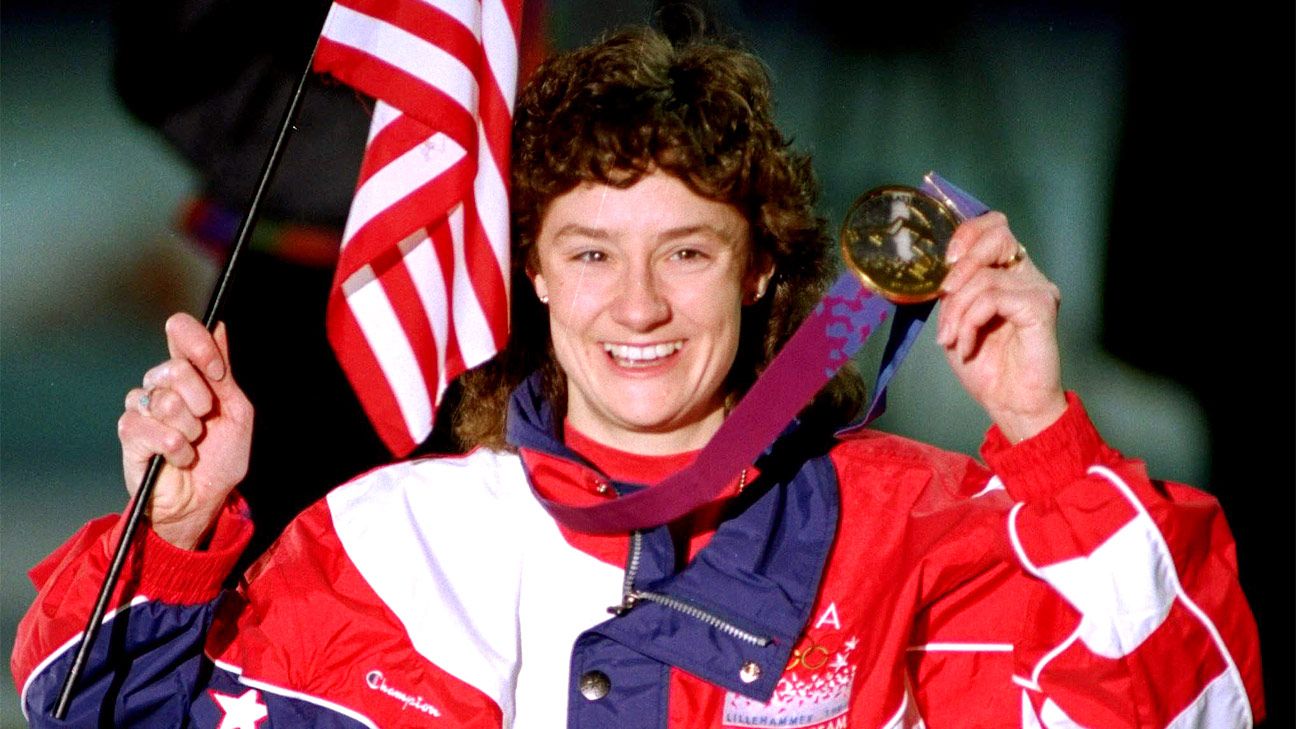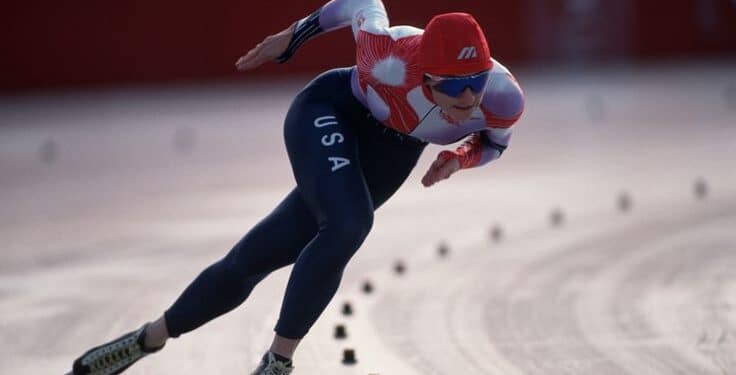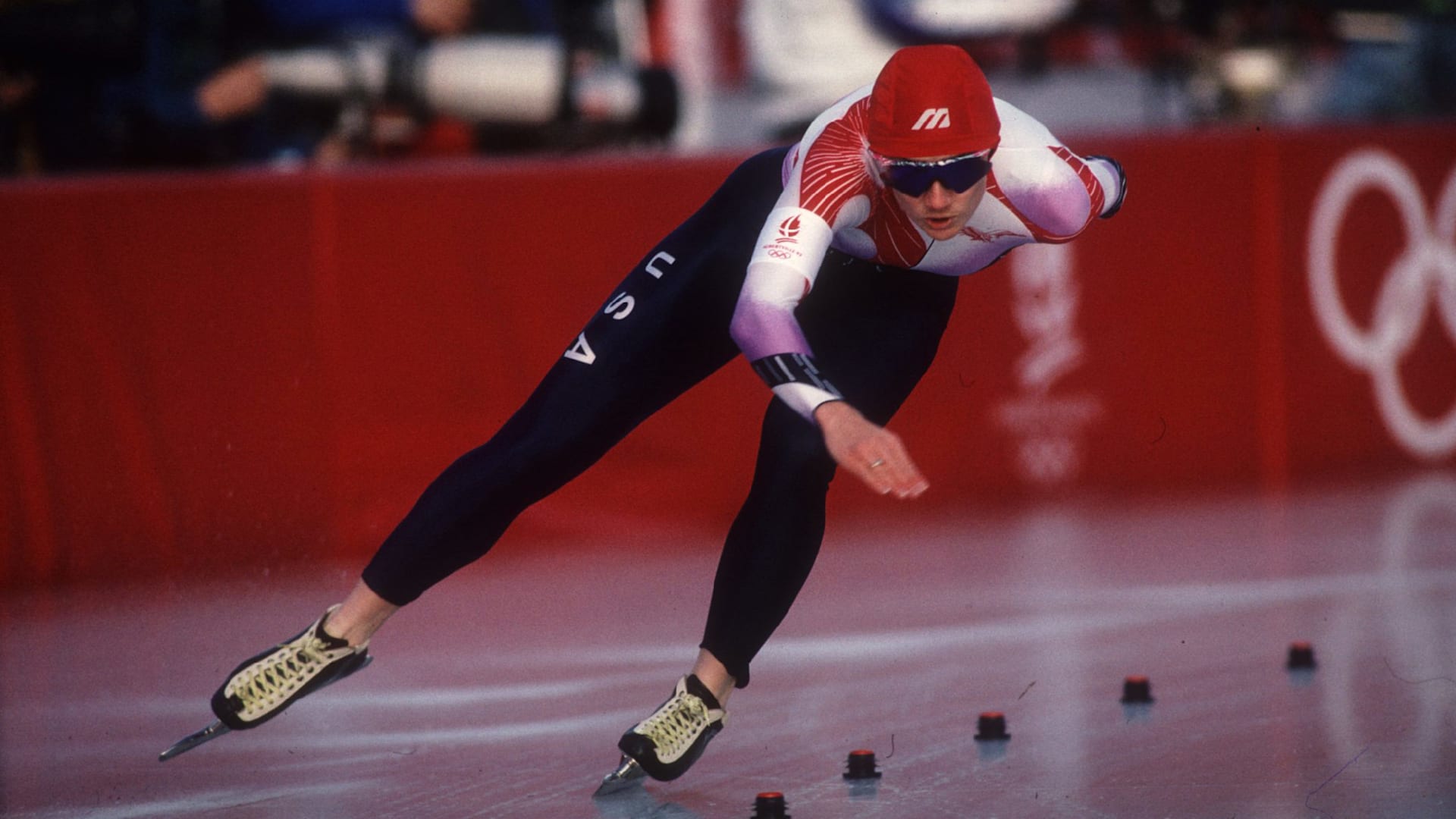By: Zachary Draves
By 1994, Bonnie Blair had been the standard bearer in speed skating at the Olympics.
During the 1988 Calgary Olympics, she took home the gold medal while setting a new world record in the 500 meters and a bronze in the 1,000 meters. Four years later in Albertville, she swept the board by winning gold in both the 500 and 1,000 meters.
Afterwards, she was featured on the cover of Sports Illustrated and became a household name.
Then came the 1994 Olympics in Lillehammer, Norway and even though she had met every mark there was in the sport, there was still ample time for more greatness. These games were also made possible by a decision made in 1986 by the International Olympic Committee to host the summer and winter games in an alternating four year cycle.
Going into the games, Bonnie had come off an unspectacular 1993 season in which she lost all four of her races at the World Sprint Championships to her rival Ye Qiaobo of China, whom she had defeated in Albertville. Later she split from head coach Peter Mueller and ended up working with Nick Thometz.
At the US Olympic Long Track Trials at the famed Pettit National Ice Center in Milwaukee, Bonnie was back into the fold as she set track records in both the 500 and 1,000 meters.
Her third time to shine had arrived and Bonnie looked at it as an opportunity to prove to herself that she was still the best and prioritized herself before anything else.
“I knew I needed to beat myself before I could beat anybody else” she said. “I knew what I needed to do to make it happen.”
Bonnie didn’t disappoint as she won two more gold medals in both the 500 and 1,000 meters. In the 500, she bested her second best time by 0.36 seconds and in the 1,000 she won by the largest margin of victory in history by 1.38.
:max_bytes(150000):strip_icc():focal(1179x281:1181x283):format(webp)/bonnie-blair-2000-5eaeee56fec74ea3b2741a413d614c1e.jpg)
(Courtesy: Bob Martin/Getty Images)
She also competed in the 1,500 meters just as she did in the previous two Olympics and finished a respectable 4th, much like she did in Calgary. Afterwards, she announced that the Lillehammer games would be her last.
“To have gone another four years that would have been a long way down the road,” she said. “I knew I had given it everything I had.”
Bonnie also recalls being on the victory podium after the 1,000 meters and during the playing of the national anthem, she was pondering really hard about a future without the Olympics.

(Courtesy: AP Photo/Lionel Cironneau)
“I had a lot of different emotions but standing on that podium I was standing there going I am never going to have this feeling again,” she said. “I am never going to hear the national anthem playing like it did. It was kind of a sad moment because I knew it was over. I hear the national anthem today and I probably hear it differently than the average American. Through it all, that was it and that was the end.”
But she made sure to bear witness to additional history being made on the part of her best friend Dan Jansen, who won his first ever gold medal in the men’s 1,000 meters after a decades long journey of heartache and pain.
She wasn’t at the rink, but watched with a group of teammates at the Olympic Village.
“I needed to save my energy for my races,” she said. “I was watching on a live feed at the Olympic Village and when DJ finally won that 1000 we were jumping up and down, we were screaming.”
She was able to snatch a walkie talkie from security to call Jansen to congratulate him.
One year after Lillehammer, Bonnie announced her retirement from the sport after winning a gold medal in 500 meters at that year’s world championships in Milwaukee, in which she beat her own world record.
She carried the Olympic torch prior to the 2002 Salt Lake City Olympics, was part of the US delegation to the 2014 Sochi games, and served on the board directors for US Speedskating.
She continues to be involved in the sport and sits on the board of directors for the Pettit National Ice Center.
In terms of her legacy, Bonnie credits her late father Charlie for planting the goal in her head to become an Olympian.
“It was my dad’s dream that I would have become an Olympian and he put that thought process in mind” she said. “Everything came at a gradual basis. I kept readjusting my goals and thought processes along the way. I knew I liked to skate and I knew I liked competing.”
As for going out on top, she offers advice to others to know when to be satisfied with one’s achievements and contributions.
“Look at ourselves and what we can do to be satisfied that you gave it your all and be the best that you can be,” she said. “Maybe you are not satisfied but content with the results. It is a journey. There are not many people that made four Olympics and sometimes you have to look back at what success really is.”


 NFL
NFL




